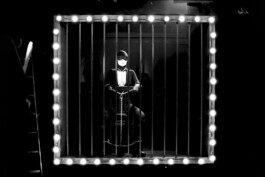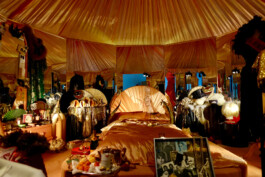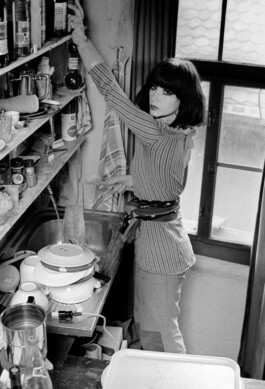Manon, October 4, 2025
I was there with my first husband, Giorgio Frapolli, who introduced the Rolling Stones concert in the Hallenstadion in 1968. We took the tram to Wollishofen. I can’t remember the other people at the Rote Fabrik, most likely they were young, like us.
Patti Smith fascinated me from the very first moment—with her extremely reserved physical presence, and, of course, her singing. She cast such a strong spell over us all that we barely dared to breathe. What I still remember is a scene that was, in the broadest sense, highly erotic: she slowly, deliberately, slipped off her jacket—no more than that. But the effect was so powerful, it was as though she had stripped naked. I think people even applauded.
I no longer recall how I heard about the concert. But it must have been the talk of the town. The sex worker Lady Shiva and the artist H.R. Giger were also there. Giger had once painted me for a magazine cover, together with my cat (he called the painting Minon). I didn’t see either of them that night, the place was crowded.

At the time I was living in Zurich. That same year I showed my Männerschau (Men’s Show) in the shop window of a former butcher’s shop in Zurich—even today, people still stop me to ask about it. The Blick ran a full page headline: “Manon exhibits live men and says, ‘This is art!’” Years later, the show was reconstructed, life-size, at the Kunstmuseum Bern and Kunstmuseum Basel.

Before that, I had drawn attention with The Salmon-Colored Boudoir—an installation that was later shown in New York, London, and Paris. The year before, I had staged the installation performance The End of Lola Montez at the Kunstmuseum Luzern, in which I, as “Lola,” was chained to a chair in a black cage (even though I’m claustrophobic). The cage is now owned by The Kunstmuseum St. Gallen and is also shown internationally.

Private photo by Sandro Salamandro from the book Manon 74–77. Shot in the loft that we lived in at the time. The benevolent publisher Theo Pinkus had—illegally—siphoned water and electricity up to us. The electricity also fed the “Club einsamer Herzen (Lonely Hearts Club)” a few floors down. Neither they nor we knew about it—and no bills ever arrived.
This is what life felt like then: everything was new, fresh, daring.
Manon is one of Switzerland’s most important artists, known for her performances, installations, and staged photography. After studying at the Arts and Crafts School and Stage Academy Zurich, from 1974 onward, she helped shape the genre of the art-environment with works such as the The Salmon-Colored Boudoir, and became one of Switzerland’s first performance artists.